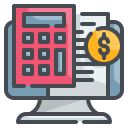Security Features of Cloud Management Accounting Systems
Chosen theme: Security Features of Cloud Management Accounting Systems. Explore how modern controls, from encryption to zero trust, keep ledgers, invoices, and financial workflows safe without slowing down your team. Share your security questions or subscribe for deep-dives tailored to finance leaders.
Instead of one big vault, your general ledger, payables, receivables, and reporting pipelines live in separate, tightly controlled segments. If an attacker gets in, lateral movement is blocked, protecting crown-jewel financial records from silent compromise.
Zero Trust Foundations for Cloud Accounting
Access is continuously evaluated using device health, geolocation, IP reputation, and user behavior. A finance analyst working from a new location triggers additional verification, ensuring sensitive exports only proceed when risk signals look trustworthy.
Zero Trust Foundations for Cloud Accounting
Strong Encryption from Browser to Backup

Sessions use TLS 1.3 with robust cipher suites and forward secrecy so recorded traffic is useless to eavesdroppers. Even if a key were later exposed, past invoice approvals and statements would remain confidential.
Identity, MFA, and Access Hygiene
Single sign-on via SAML or OpenID Connect centralizes access, while SCIM automates user provisioning and deprovisioning. When an employee leaves, their access to ledgers, APIs, and exports is revoked promptly and consistently.
Identity, MFA, and Access Hygiene
FIDO2 security keys and passkeys defeat common phishing attacks by binding authentication to the device and domain. Finance admins can require step-up verification for wire approvals without burdening routine, low-risk activities.



Monitoring, Audit Trails, and Anomaly Detection
Every journal entry, vendor change, and approval leaves a tamper-evident, time-synchronized record. Auditors trace actions to individual identities, supporting compliance and speeding investigations when something looks off.
Monitoring, Audit Trails, and Anomaly Detection
Machine learning highlights unusual posting times, abnormal amounts, or new devices initiating refunds. A late-night vendor bank update might trigger alerts and temporarily require secondary approval to protect outgoing payments.
Compliance, Privacy, and Data Residency
SOC 2 Type II and ISO 27001 Mapping
Controls map to SOC 2 and ISO 27001 domains: access, change management, incident response, and availability. Independent audits validate that processes run consistently over time, not just at a single point.
GDPR/CCPA and Data Minimization
Features support subject rights, retention schedules, and minimized collection. Reports can exclude personal identifiers by default, while deletion workflows cascade across backups and archives with carefully audited exceptions.
Regional Residency and Isolation Options
Choose regions to keep financial data close to stakeholders and aligned with local rules. Some providers offer logical isolation or dedicated environments, balancing compliance needs with cost and operational simplicity.
Resilience: Backups, Incident Response, and Continuity
Backups follow the 3‑2‑1 strategy, with immutability windows preventing tampering. Regular restoration drills verify that month-end data can be recovered quickly, preserving trust and shortening downtime during crises.


Resilience: Backups, Incident Response, and Continuity
Documented runbooks define who does what, acceptable recovery times, and data loss tolerances. Tabletop exercises rehearse scenarios like compromised credentials or data center failures, strengthening coordination before real pressure arrives.
